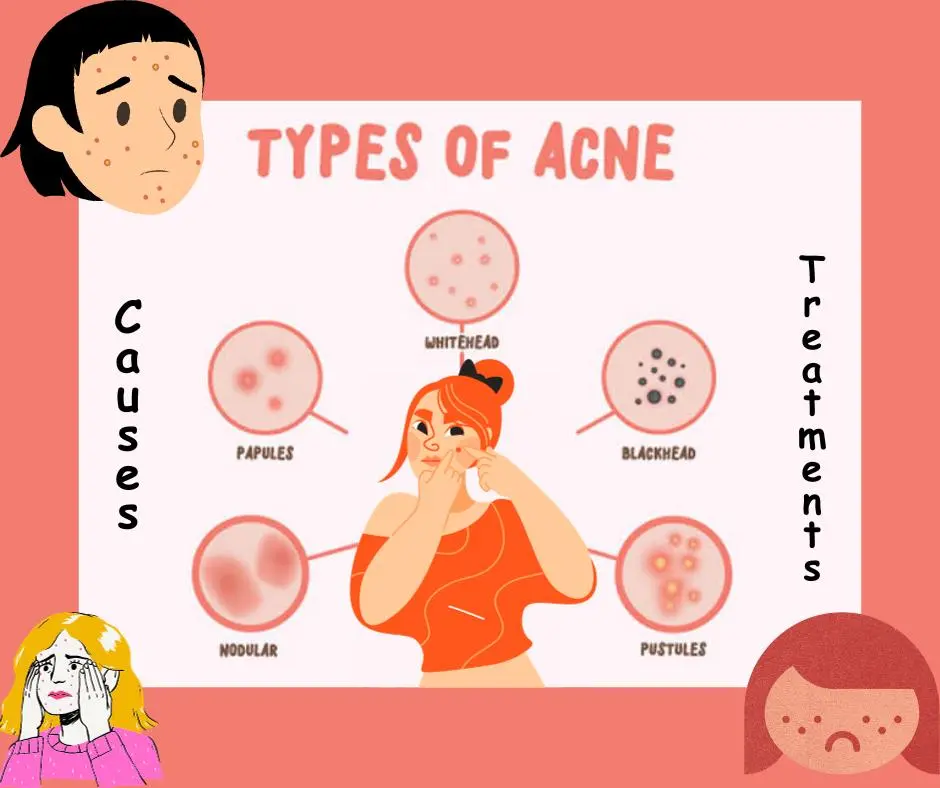Dealing with frustrating acne as an adult? Here are some reasons that might surprise you — and the advice dermatologists suggest to help clear up acne.
Overview
What Is The Truth of Adult Woman Acne Problem According to American Academy of Dermatology(AAD)?
The American Academy of Dermatology recognizes that 15% adult women can experience acne problems. They offer various treatments and solutions to help manage and alleviate adult woman acne. It’s essential to consult with a dermatologist to address this concern effectively and receive personalized guidance.
“It’s intriguing that you can develop it [as an adult] even if you didn’t experience it during your teenage years,” notes Dr. Francesca Fusco, who works as an assistant clinical professor in the dermatology department at Mount Sinai Medical Center in New York City.
“Adult acne typically shows up on the bottom part of the face, while teenage acne tends to affect the upper half,” explains Dr. Fusco. “Adult acne is also deeper and appears as cysts or pimples beneath the skin, which can’t be popped.”
How Many Grades of Adult Acne?
Here are the grades adult acne:
| Grade | Description |
|---|---|
| Grade 1 (Mild) | Few non-inflammatory lesions; minimal redness; no or minimal papules/pustules. |
| Grade 2 (Moderate) | More papules, pustules; noticeable redness and inflammation. |
| Grade 3 (Moderately Severe) | Higher number of inflammatory lesions, including nodules; scarring may occur. |
| Grade 4 (Severe) | Numerous pustules, cysts, nodules; large area affected; scarring and significant inflammation. |
This grading system helps healthcare professionals assess the severity of acne and determine the most appropriate treatment options.
Types
What Are The Types Adult Acne?
Acne, a common skin condition, comes in several forms, each with its distinct characteristics. Here are the primary types:
- Whiteheads: These are small, closed, and flesh-colored bumps caused by blocked hair follicles filled with sebum and dead skin cells.
- Blackheads: Open comedones with dark tops caused by clogged pores. The dark color is not due to dirt but results from oxidation.
- Papules: Inflamed, small, red bumps without a visible center. They can be tender to the touch.
- Pustules: Similar to papules but with a white or yellow center caused by pus. They often appear as a visible, elevated bump.
- Nodules: Large, solid, painful lumps beneath the skin’s surface. They often require medical treatment.
- Cysts: These are severe, deep-rooted, inflamed lesions filled with pus. Cysts can cause scarring and need professional intervention.
- Rosacea: A chronic condition characterized by redness, visible blood vessels, and small, pus-filled bumps, usually affecting the face.
- Conglobata: A rare, severe form of acne characterized by interconnected nodules and cysts, which can lead to severe scarring.
- Fulminans: A rare, abrupt onset of severe, ulcerating pimple associated with systemic symptoms.
Each type of pimple requires different management and treatment, often necessitating consultation with a dermatologist for personalized care.
Facts & Causes
15 Facts of Adult Acne
- Adult Pimple Surprise: Pimples for Grown-Ups!
- Late-Blooming Breakouts: Adult Acne Insights
- Hormonal Havoc: Why Adults Get Pimple
- Stubborn Spots: Deep and Mysterious Cysts
- Face Map: Adult Acne vs. Teen Acne
- Life’s Stressors and Adult Acne Connection
- Beauty Routines vs. Pesky Pimples
- Food Fables: What You Eat and Adult Acne
- Skin Care Secrets for Adult Acne Fighters
- The Role of Genetics in Grown-Up Breakouts
- Flare-Ups and Periods: Hormones at Play
- Adult Acne Across the Gender Spectrum
- Beyond Puberty: Adult Acne is Not Alone
- Scars: Battling the Aftermath
- Dermatologist’s Rx: Tackling Adult Acne Head-On
Causes of Adult Acne
Certainly, here are the causes of Adult Acne:
| Cause | Description |
|---|---|
| Excess Sebum Production | Overproduction of skin oil (sebum) can clog pores. |
| Clogged Pores | Hair follicles become blocked by sebum and dead skin cells. |
| Bacteria (P. acnes) | Propionibacterium acnes (P. acnes) can lead to inflammation and acne development. |
| Inflammation | Inflammatory responses in the skin result in redness and swelling. |
| Hormonal Changes | Hormonal fluctuations, common during puberty, pregnancy, and the menstrual cycle, can affect sebum production. |
| Genetics | A family history of acne can increase susceptibility. |
| Diet | Some individuals may be affected by certain foods. |
| Stress | Elevated stress levels can trigger hormonal changes that exacerbate acne. |
| Medications | Certain drugs, like corticosteroids or some contraceptives, may cause acne as a side effect. |
| Cosmetic Products | The use of comedogenic (pore-clogging) cosmetics and skincare products can contribute to acne. |
Foods That Causes Acne
The relationship between diet and pimple is complex and can vary from person to person. While some foods may trigger or exacerbate adult acne in certain individuals, it’s essential to note that the impact of diet on acne is not universally agreed upon in the medical community. However, some foods that are commonly associated with a potential to worsen pimples include:
- High-Glycemic Foods: Foods that cause rapid spikes in blood sugar levels, such as sugary snacks, white bread, and sugary cereals, may contribute to acne for some individuals.
- Dairy Products: Some people find that dairy products, particularly skim milk, can worsen acne.
- Fast Food and Junk Food: Greasy and fried foods, as well as foods high in saturated and trans fats, may contribute to acne in some cases.
- Chocolate: While the link between chocolate and acne is debated, some individuals report breakouts after consuming large amounts of chocolate.
- Iodine-Rich Foods: High levels of iodine in foods like seafood and iodized salt may worsen acne for certain individuals.
- Processed Foods: Processed and heavily refined foods can contain additives and preservatives that might exacerbate acne.
It’s important to remember that the relationship between diet and acne is individualized, and not everyone will be affected by these foods.
Diagnosis & Treatment
How Do Healthcare Professionals Diagnose Acne?
Diagnosis of acne primarily involves a clinical evaluation by a healthcare provider, often a dermatologist.
They examine the patient’s skin, looking for specific acne lesions:
Whiteheads
Blackheads
Papules
Pustules
Cysts
The distribution, severity, and presence of scarring are considered. Additionally, the healthcare provider may discuss the patient’s medical history and potential triggers. Further tests, like hormone level assessments, may be recommended if hormonal factors are suspected. The diagnosis is mainly based on visual observation and a patient interview to establish the most suitable treatment plan.
Acne Treatment
Acne treatment involves a multifaceted approach to manage and alleviate this common skin condition:
- Topical Treatments: Over-the-counter or prescription creams, gels, and lotions containing ingredients like benzoyl peroxide, salicylic acid, or retinoids can help unclog pores and reduce inflammation.
- Oral Medications: In severe cases, antibiotics or oral contraceptives may be prescribed to address underlying causes and reduce inflammation.
- Isotretinoin: This potent medication is reserved for severe, persistent cases of acne and works by reducing oil production and preventing clogged pores.
- Lifestyle Adjustments: Managing stress, maintaining a balanced diet, and gentle skincare can aid in acne control.
- Professional Treatments: Dermatologists offer procedures like chemical peels, microdermabrasion, and laser therapy for acne and scarring.
- Consistency: Treatment may take weeks or months to show results, so consistency is key for successful acne management.
Consulting a healthcare professional is vital to determine the most suitable treatment based on the type and severity of acne.
FAQ
What questions should you ask your doctor about your acne problem?
- What Type of Acne Do I Have? Understanding the type and severity of your acne is crucial for developing an effective treatment plan.
- What Are the Best Treatment Options for My Acne? Ask about available treatments, both topical and oral, and which would be most suitable for your case.
- How Long Will It Take to See Results? Managing expectations regarding the timeline for improvement is important.
- Should I Make Any Dietary or Lifestyle Changes? Your doctor can advise on habits that may help manage acne.
- How Can I Prevent Acne Scarring? Inquire about strategies to minimize scarring and skin damage.
- What Skincare Products Are Safe and Effective for Me? Seek recommendations for gentle and suitable skincare products.
- What Should I Avoid in My Skincare Routine? Understanding which products or practices may exacerbate acne is essential.
- Is My Acne Linked to Hormonal Imbalances? Hormonal factors can be significant, especially in adult acne; inquire about potential tests or treatments.
- Can I Continue Using Makeup or Skincare Products While Undergoing Treatment? Ensure that your current products won’t interfere with your treatment.
- How Do I Care for My Skin During and After Treatment? Request guidance on post-treatment skincare routines and practices.
Source: ZoxPR


3 comments
Thanks for this info
well done
may be it will work